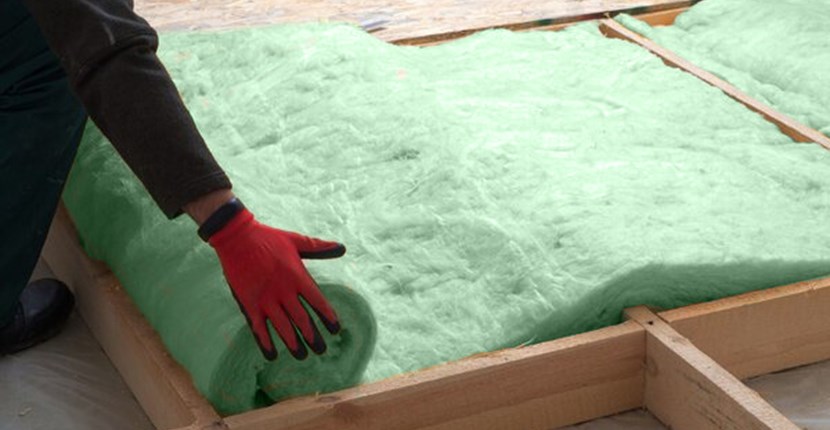Posted on 09 06 2022
Understand R-values and check up on your insulation

We talk a lot about the importance of insulation in your home and for good reason. Apart from the structure itself, insulation is the single most effective tool for keeping your home dry, healthy and comfortable.
A well-insulated home will keep your home warmer in winter and cooler in summer. In winter, heat rises and will escape through any insulation gaps in the roof cavity. In summer, the temperature in the roof space can climb to over 40C and if the ceiling isn’t well insulated, this heat will transfer into the house.
The consequences are higher energy bills and maintenance costs, respiratory illnesses caused by cold and dampness, and all the stress that goes with living in a house that’s too hot or cold.
To be effective, insulation needs to be installed correctly and have the appropriate R-value for your home’s location. Minimum R-values are prescribed by the Building Code as follows for existing homes (we cover new homes below):
- Zone 1 and 2: North Island excluding Central Plateau
- Ceiling R2.9, Wall R1.9, Underfloor R1.3
- Zone 3: South Island and Central Plateau
- Ceiling R3.3, Wall R2.0, Underfloor R1.3
What are R-values?
The R-value of any material is an expression of the ability of heat to move from the hot side of the material to the cold side (or face). The stated R-values for any insulation product will depend on several factors:
- Thermal conductivity (how fast and easily heat energy can move through it)
- Density (compressed insulation is less effective than new, ‘fluffy’ insulation)
- Thickness (how much material there is for the heat to cross)
- Temperature difference between each face (the greater the temperature difference, the faster the heat transfer)
- Dryness (water is a very effective heat conductor, which is why a dry shirt is warmer than a wet one)
The higher the R-value, the better the material will prevent heat loss. We recommend going much higher than the Building Code’s minimum insulation requirements if you can afford it. There are two reasons for this:
- The overall effectiveness of your insulation will depend on how it’s installed (escaping heat will head straight for any gaps) and factors such as lighting (older, heat-emitting downlights need larger gaps around them).
- New Zealand’s insulation standards are much lower than countries with similar climates and recent changes to the Building Code have bumped up the minimum insulation levels for new builds. The new requirements double the amount of roof insulation required and increase minimums for windows, walls and underfloor.
Nothing lasts forever
Good quality insulation will last decades under ideal conditions, but conditions in many homes are less than ideal and as your insulation ages, it will undergo changes that might need addressing.
Moisture, dirt, dust, and compression of the insulation material will reduce its effectiveness over time. It’s a good idea to periodically check your insulation for damage or compaction and, if it’s more than 15 years old, you should consider having it replaced or topped up.
If your roof has had to be repaired or replaced because of leaks, you should definitely have your ceiling insulation inspected. Mildew and mould not only damage insulation materials but also indicate that it’s been exposed to excessive moisture, which will severely affect the R-value.
Check your ceiling insulation
If you’re unsure about the state of the home’s insulation, it’s a good idea to talk to a professional insulation installer like Greenside, although you can do a simple visual check of your ceiling and underfloor insulation before calling us.
To check your ceiling insulation, use a stepladder to access your roof space via the ceiling hatch. Ceiling spaces contain multiple hazards, so take care or complete your check from the ladder if you can.
You’ll need a top-up layer or replacement if the insulation is less than 120mm thick, doesn't cover the whole ceiling, or is contaminated or damaged. Typically, if you can see the rafters or the bottom board of the trusses, the insulation is probably too thin.
For fire safety, there should be gaps between the insulation and any heat sources like older recessed downlights, chimneys, flues, or extractor fans.
Under the floor
If your home has underfloor insulation, it will more than likely be polyester or glass wool, which should be fine, as long as it’s not damaged or hanging down anywhere. If you only have foil under the floor, we recommend installing bulk insulation such as expandable polystyrene.
And while you’re under the house, consider laying some polythene sheeting over the ground. Dollar for dollar, installing a ground moisture barrier is one of the best things you can do to improve the health and comfort of your home, without the price tag.
As always, our experts are here to help you with anything insulation related. We can inspect your ceiling, wall and underfloor insulation for you and give you a report on its condition and any remedial work that might be needed.
Depending on your area, you may be eligible to receive an insulation subsidy of 90% or more. Get in touch and talk to our team today.